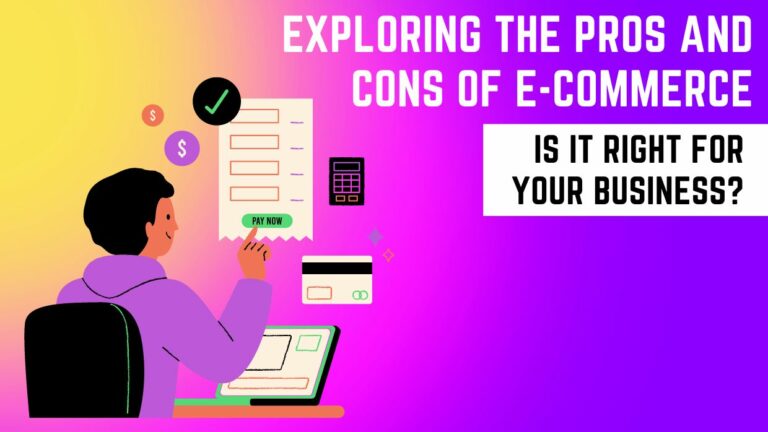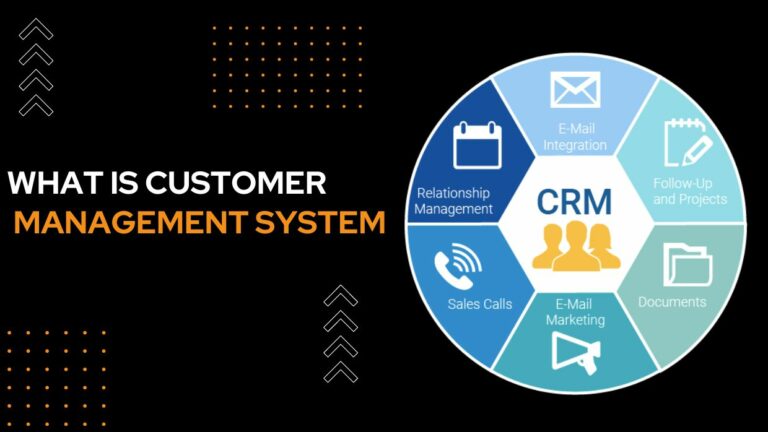What are The Common E-commerce Mistakes
In this blog post, we will shed light on “What are The Common E-commerce Mistakes”. Are you struggling to make a mark in the e-commerce world despite putting in all your efforts and resources? Do you feel like you’re missing out on something crucial that’s preventing your business from taking off? Well, chances are, you might be committing some common e-commerce mistakes without even realizing it. So let’s dive deep and learn how to avoid these pitfalls and propel your e-commerce venture toward success!
Overview of E-commerce Business
It is no secret that e-commerce is growing at an alarming rate. In fact, it is projected that by 2021, global e-commerce sales will reach $4.5 trillion. However, with this rapid growth comes increased competition, and businesses must be aware of the common mistakes made in e-commerce in order to stay ahead of the curve.
One of the most common mistakes is not catering to mobile users. In today’s age, it is essential that businesses have a responsive website that can be accessed on any device. According to Statista, as of 2018, there are 3.7 billion global smartphone users and this number is only expected to grow. Failing to optimize for mobile could mean losing out on a large portion of potential customers.
Learn more… Your Step-By-Step Guide To E-commerce
Common Mistakes in E-commerce

There are a number of common mistakes that businesses make when venturing into e-commerce. Perhaps the most common mistake is not having a clear and defined target market. Without this, it can be difficult to create an effective marketing strategy and gauge the success of your e-commerce platform. It’s also important to have a solid business plan in place before launching an online store. This will help you to track progress and ensure that your e-commerce venture is sustainable in the long term.
Another common mistake is failing to invest enough in your online presence. A professional website is essential for any business, but even more so for those selling products or services online. Your website should be optimized for search engines and easy to navigate, with clear calls to action. Social media can also be a powerful tool for promoting your e-commerce business, so make sure you are active on the platforms that your target market uses.
Finally, don’t underestimate the importance of good customer service when running an e-commerce business. In many cases, customers will have questions or concerns about the products they have purchased, so it’s important to have a team in place that can address these issues promptly and efficiently. Creating a positive customer service experience will help to build loyalty and repeat business.
Read more… What Are Some Important Pros and Cons of E-commerce
Not Optimizing the Shopping Cart
If you’re not optimizing your shopping cart, you could be missing out on a lot of potential revenue. There are a few key things to keep in mind when it comes to optimizing your shopping cart:
Make sure the checkout process is as streamlined as possible. The fewer steps there are, the more likely customers are to complete their purchase.
Offer multiple payment options. Customers should be able to pay with their preferred method, whether that’s a credit card, PayPal, or something else.
Provide order tracking information. Customers want to know when their order will arrive, so make sure you provide them with updates along the way.
Offer customer support. If something goes wrong with an order, customers should be able to easily get in touch with someone who can help them resolve the issue.
By following these tips, you can make sure your shopping cart is optimized and ready for increased sales.
Lack of Mobile Optimization
Lack of mobile optimization is one of the most common e-commerce mistakes. Mobile devices are becoming increasingly popular as a means of shopping online, but many online stores are not optimized for mobile devices. This can result in a poor user experience, which can lead to lost sales and customers.
There are a few things to keep in mind when optimizing your online store for mobile devices. First, make sure that your website is responsive, meaning that it will adjust to fit any screen size. Second, ensure that your menus and navigation are easy to use on a mobile device.
Third, make sure that your product pages and checkout process are optimized for mobile devices. By following these tips, you can avoid the common mistake of lack of mobile optimization and provide a better experience for your customers.
Poor Website Design
If your e-commerce website is poorly designed, it will reflect badly on your business and turn potential customers away. A well-designed website is essential for any online business, and there are a few key things to keep in mind when creating or revamping yours.
Your website should be easy to navigate, with clear and concise menus and an easily searchable product catalog. The layout should be clean and uncluttered, and the design should be professional and stylish. The overall look of your site should give visitors confidence that they are dealing with a reputable company.
Make sure that all of your content is well-written and free of errors. Your product descriptions should be informative and persuasive, without being overly sales. You’re About Us page should give visitors a sense of who you are as a company, what you stand for, and why they should do business with you.
Finally, take the time to test your website thoroughly before launch. Make sure that all of your links work, that your shopping cart functions properly, and that your payment gateway is secure. By taking care of these details, you can avoid many common e-commerce mistakes and give yourself a better chance of success.
Insufficient Product Information
Many e-commerce platforms do not provide adequate product information, making it difficult for shoppers to make informed decisions. This can lead to returns and frustrated customers.
Make sure your product descriptions are clear and concise and include all the important details that shoppers need to know. Also, take advantage of product reviews and ratings to give shoppers more insight into the quality of your products.
Ignoring Customer Reviews
When it comes to e-commerce, one of the cardinal sins is ignoring customer reviews. Whether it’s on your website, social media, or third-party platforms like Amazon and Yelp, customers’ voices should always be front and center. Not only do potential customers trust reviews from other shoppers—88% according to a BrightLocal study—but they also expect businesses to take them seriously.
In fact, 56% of respondents said they would take their business elsewhere if a company ignored their positive review, and 72% would do the same if their negative review was met with silence.
So why do some businesses still choose to ignore customer feedback? It could be because they think they already know what their customers want, they’re too busy to respond to every review (which is understandable), or they’re worried about what acknowledging complaints might mean for their brand reputation. Whatever the reason, it’s a mistake—and one that can cost you dearly in terms of both customers and revenue.
If you’re not already paying attention to your customer reviews, it’s time to start. Here are a few things you can do to get started:
- Monitor all channels where customers might leave feedback, including your website, social media platforms, and third-party sites.
- Respond quickly and thoughtfully to both positive and negative reviews. Thank customers for their praise and work to address any concerns they have.
- Use customer reviews to identify trends and areas for improvement.
- Analyze reviews periodically to gauge customer sentiment and satisfaction with your products or services.
- Take action on issues raised by customers, such as making changes to your product line or improving customer service.
By taking feedback seriously and acting on it, you’ll show customers that their opinions matter—and that’s sure to pay off in the long run.
Focusing on Product Offering over Service
When it comes to e-commerce, one of the most common mistakes businesses make is focusing too much on their product offering and not enough on their service. This can lead to a number of problems, including poor customer service, high shipping costs, and longer delivery times.
To avoid these problems, it’s important to focus on both your product offering and your service. Make sure you offer a wide range of products that meet your customer’s needs and provide excellent customer service throughout the entire shopping experience. By doing so, you’ll be able to keep your customers happy and coming back for more.
How to Avoid these Mistakes?
When it comes to setting up and running an e-commerce business, there are a few common mistakes that can trip you up. Here’s how to avoid them:
Not doing your research: Before you launch your e-commerce business, it’s important to do your research and understand the market you’re entering. Who are your competitors? What needs does your target market have that aren’t being met? What kind of products or services can you offer that will give you a competitive edge? Answering these questions will help you create a strong foundation for your business.
Failing to plan: Once you’ve done your research, it’s time to start planning. What goals do you want to achieve with your e-commerce business? How will you reach those goals? What resources will you need in order to make your business a success? Planning ahead will help ensure that your e-commerce business is set up for success from the start.
Not investing in marketing: In order for people to find out about your e-commerce business, you need to invest in marketing. This could include everything from Search Engine Optimization (SEO) and content marketing to social media advertising and email marketing. Without an effective marketing strategy, it will be very difficult for people to discover your business – no matter how great your products or services may be.
Ignoring customer feedback: When you run an e-commerce business, it’s important to pay attention to customer feedback. This can help you identify areas where your products or services may need improvement, and it can also help you learn more about what your customers want. Responding to customer feedback promptly and appropriately will show that you value their input and are willing to make changes based on their suggestions.
Read more… How To Manage Risk in E-commerce Business
Conclusion
In conclusion, e-commerce can be a great way for businesses to reach a larger audience and increase their sales. However, it is important to avoid the common mistakes outlined in this article. Taking proactive steps such as creating an effective website design, marketing your e-commerce store correctly, and providing excellent customer service are all key elements of a successful e-commerce business. By avoiding these common mistakes you will have greater chances of running a profitable online shop.







